We’re getting a lot of questions about HM and HD. Here’s what we know! It’s tough to get an accurate copulation count but the two appear to copulating regularly, which indicates that HM is approaching her fertile period. Last year, she laid her first egg on February 25. It isn’t uncommon for first-time layers to float a little earlier, especially in their first two to three years of nesting, so we’ll see when she lays this year. We can’t see into the nest, but local observers and our camera operators can help us determine when full incubation starts, and we’ll let everyone know as soon as we do!
I loved watching and writing about HD and HM again, but don’t miss the return of the stubborn stick from Decorah North in tonight’s NestFlix roundup! We hope you enjoy it as much as we did.
Decorah Eagles
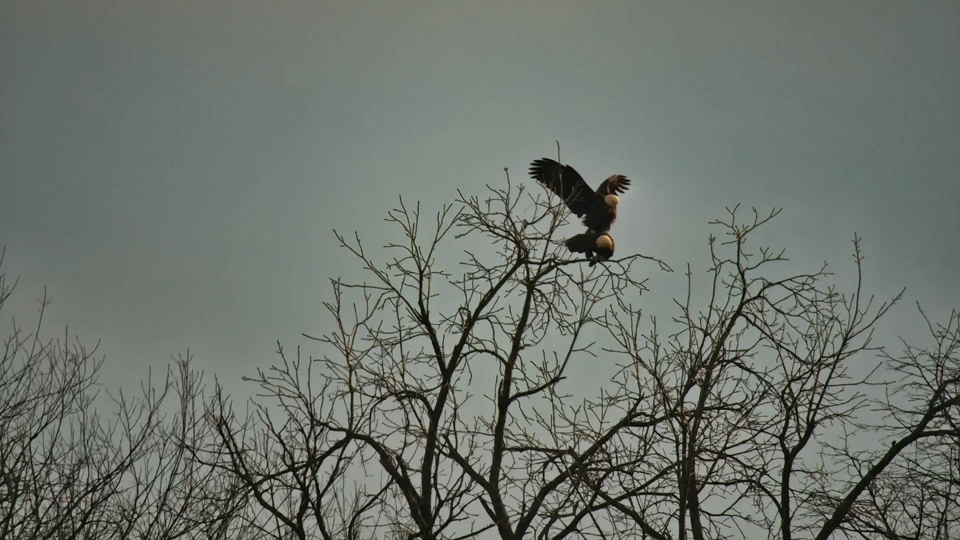 February 6, 2024: When I think of acrobatic copulations, I think of falcons, not bald eagles!
February 6, 2024: When I think of acrobatic copulations, I think of falcons, not bald eagles!
February 6, 2024: Acrobatic copulation on a high branch by the bluffs – https://youtu.be/0q20NAS2tKg?si=pTXfb5tIXaMtDFMq. When I think of acrobatic copulations, I think of falcons, not bald eagles! HM is perched high on a treetop when HD flies in at :59. She tilts forward, indicating an interest in bonding, and the two duet (sadly, it’s too far away for us to hear them). Copulation begins at 1:21 and it looks like it isn’t especially easy given the precariousness of HM’s perch, although the two make it work. He appears to float off her back at 1:40 and perches on a nearby branch. An impressive display of aerial skill and balance from both of them!
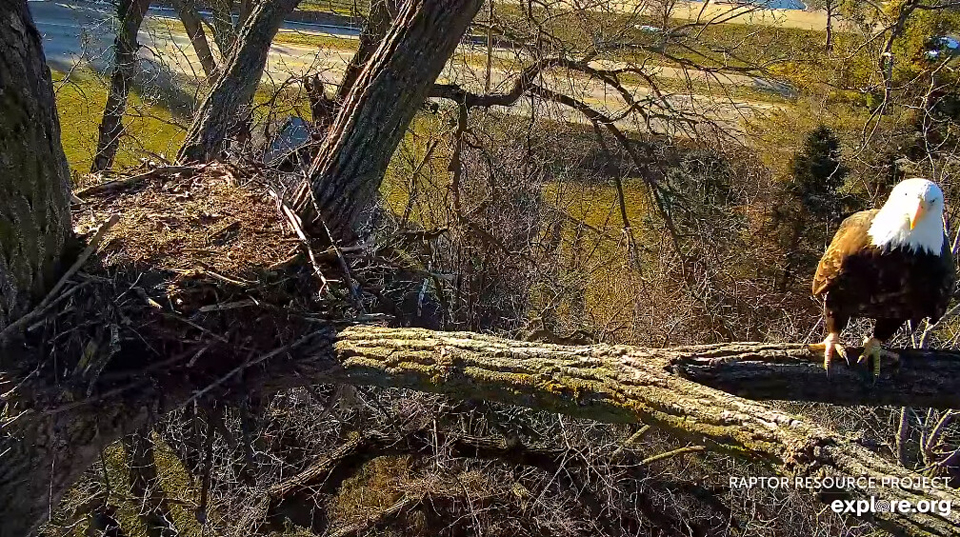 February 6, 2024: HM near N1, shortly after just missing an intrepid squirrel!
February 6, 2024: HM near N1, shortly after just missing an intrepid squirrel!
February 6, 2024: HM almost caught a squirrel on N1! Then she went to the Y – https://youtu.be/qKA0izHiVbM?si=cwKa1EUDU9M1r9Bo. Watch out, Lucky – luck can only take you so far! The video opens with a fox squirrel running in from the Y-branch. It investigates the side of nest N1 before running across it at 20 seconds. At 33 seconds, the squirrel appears around the front of the trunk as it vocalizes: a quick chuckchukchuk as it dashes away from HM, who arrives almost simultaneously. She takes a long hop across the nest, but misses the squirrel, who continues to vocalize as she moves to the Y. Is it taunting, warning, or both? HM moves out on to the Y and perches, taking in the sights and sounds of the world around her.
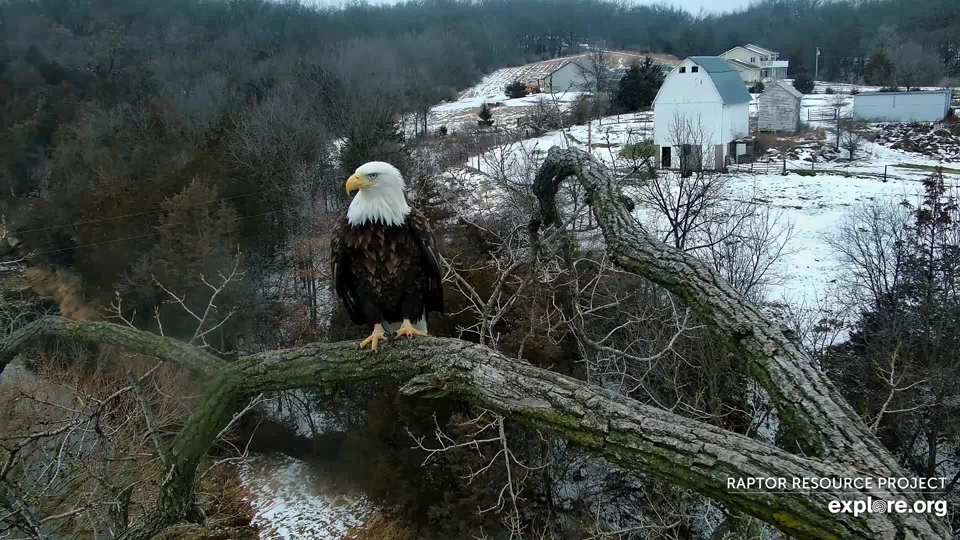 January 28, 2024: HM. A treasured eagle in a treasured place.
January 28, 2024: HM. A treasured eagle in a treasured place.
January 28, 2024: HM on the Y-branch and on N1. HD on a tree near the road – https://youtu.be/0w02MG4zqmg?si=dhzBga8oOQpEem6K. I can’t believe I missed this video! If you’ve been missing HM, this is for you: almost 20 lovely minutes of HM on the Y, including wonderful close-ups beginning at 14:47 and 18:48. Slow the video down at about 19:26 and 20:48 for two very cool take-offs, and enjoy a glimpse of HD starting in the 21st minute!
Decorah North Eagles
February 7, 2024: Return of the stubborn stick! https://youtu.be/scxAvQECHQ4?si=rgq-WXfUt_9A8MI8. Mr. North accidentally unearths the stubborn wishbone stick from February 2nd, launching a new round of stick follies. He and DNF work together – and sometimes at odds! – to battle the stick back into place. Maybe they should each grab an end and snap it before it pokes somebody’s eye out!
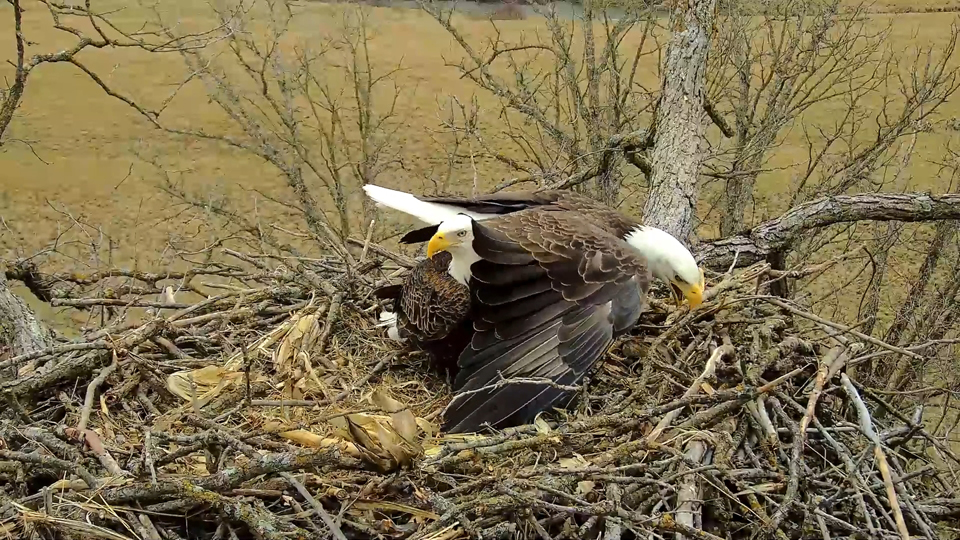 February 6, 2024: Excuse me! The return of the stubborn stick.
February 6, 2024: Excuse me! The return of the stubborn stick.
This video is a lot of fun – classic sticky business! – but also gives us a nice look at eagle courtship. Look for pecking, footing, body brushing, and soft noises that aren’t part of the formally defined cannon of eagle vocalizations, but make me think of courtship chirps and the wheedling that females direct at male mates bearing food gifts.
Why are nestorations part of bonding? It goes something like this: birds that build awesome nests relative to other members of their species must be healthy, high-quality mates. Think about bald eagles! As we’ve seen at all of our nests, eagles spend a lot of time procuring and hauling wood and soft materials into the nest. This is an energetically costly activity that requires them to be in good shape: well-fed, skilled at flying, and relatively parasite-free. While different things indicate quality to different species of birds, large nests appear to signify quality to bald eagles. Tick-tock egg clock: DNF will probably lay her first egg eight to ten days from now!
US Bank Peregrine Falcons
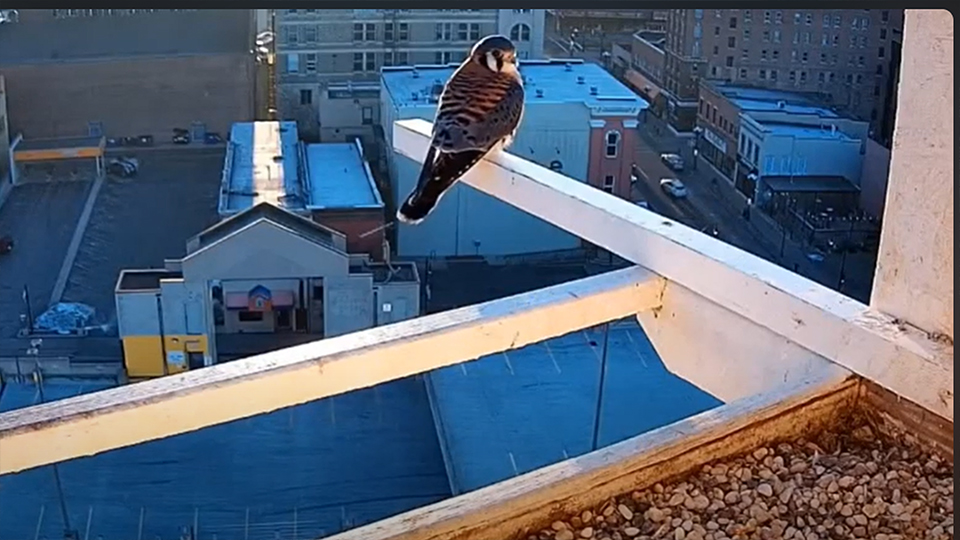 February 8, 2024: Adult male American Kestrel at our PEFA nestbox in La Crosse, WI
February 8, 2024: Adult male American Kestrel at our PEFA nestbox in La Crosse, WI
February 6, 2024: Pustułka amerykańska (American Kestrel) – https://youtu.be/w1k0GKF_aGw?si=xBXvFOf9lOMQotA8. Maybe we should put up a kestrel nestbox? I wouldn’t expect to see a beautiful male kestrel here in the concrete canyons of downtown LaCrosse, but one appeared on the perch of our falcon nest box a couple of days ago – and it’s not the first time we’ve seen a male kestrel here!
Odds and Ends
Crane who chose zookeeper as mate dies at 42: https://ny1.com/nyc/all-boroughs/ap-top-news/2024/02/01/the-crane-attacked-potential-mates-but-then-she-fell-for-her-keeper. A sad story, but very cool: the handling and care of her keeper benefitted Walnut the Crane, who lived much longer in captivity than is typical for her species. With a little help from her beloved keeper and AI (artificial insemination), Walnut gave birth to eight young.
New Migration Maps Help Birders And Scientists Find Their Sister Cities: https://www.allaboutbirds.org/news/new-migration-maps-help-birders-and-scientists-find-their-sister-cities/. This is cool! These maps help visualize where “our” birds go when they leave. We’ll be writing about that more – especially as it relates to birds we see and hear near our nests and on the Flyway!
 The Raptor Resource Project
The Raptor Resource Project The Raptor Resource Project
The Raptor Resource Project